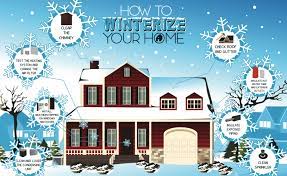Winter brings cozy nights by the fire and hot chocolate, but it also brings higher energy bills as we try to keep our homes warm and comfortable. However, with a little effort and some strategic adjustments, you can winterize your home and save significantly on energy costs. Here’s a comprehensive guide on how to do just that:
1. Introduction to Winterizing Your Home
Before the cold weather hits, it’s essential to prepare your home for winter. Winterizing involves taking steps to make your home more energy-efficient, which not only helps reduce heating costs but also ensures a warmer and more comfortable living environment.
2. Importance of Winterizing for Energy Efficiency
Winterizing your home is crucial for improving energy efficiency. By sealing air leaks, improving insulation, and maintaining heating systems, you can significantly reduce heat loss and save on energy bills.
3. Checking Insulation and Sealing Gaps
Start by assessing the insulation in your attic. Adequate insulation helps prevent heat loss through the roof, reducing the workload on your heating system. Additionally, seal any gaps around doors and windows to prevent drafts and keep warm air inside.
Assessing Attic Insulation
Inspect your attic insulation to ensure it meets recommended levels for your region. Consider adding more insulation if necessary to improve energy efficiency.
Sealing Doors and Windows
Use weatherstripping and caulking to seal gaps around doors and windows. This simple step can prevent cold drafts and save energy.
4. Heating System Maintenance
Regular maintenance of your heating system is essential for efficient operation during winter months.
Furnace Inspection and Cleaning
Schedule a professional inspection and cleaning of your furnace to ensure it’s running efficiently. A well-maintained furnace uses less energy and helps lower heating costs.
Programmable Thermostat Installation
Invest in a programmable thermostat to control your home’s temperature more effectively. Programming your thermostat to lower the temperature when you’re away or asleep can lead to significant energy savings.
5. Weatherstripping and Caulking
Replace worn weatherstripping and apply fresh caulking around windows and doors to prevent heat loss and drafts.
6. Upgrading to Energy-Efficient Appliances
Consider upgrading to energy-efficient appliances, such as refrigerators, washing machines, and dishwashers. These appliances use less energy, reducing your overall energy consumption and utility bills.
7. Insulating Pipes and Water Heaters
Insulate exposed pipes and your water heater to prevent heat loss and keep water hot for longer periods. This simple step can also reduce the risk of frozen pipes during cold weather.
8. Utilizing Window Treatments Effectively
Use heavy curtains or blinds to insulate windows and keep warm air inside. Open curtains during the day to let sunlight in and close them at night to trap heat.
9. Roof Maintenance and Gutter Cleaning
Inspect your roof for any damage or missing shingles, and repair them promptly to prevent heat loss. Additionally, clean gutters and downspouts to ensure proper drainage and prevent ice dams.
10. Landscape Preparation for Winter
Trim trees and bushes near your home to prevent damage from falling branches and improve sunlight exposure. Clear debris from outdoor HVAC units to ensure proper airflow.
11. Utilizing Space Heaters Wisely
Use space heaters sparingly and only in occupied rooms to supplement your main heating system. Remember to turn them off when not in use to avoid unnecessary energy consumption.
12. Proper Fireplace Usage and Maintenance
If you have a fireplace, ensure it’s properly maintained and inspected annually. Close the damper when not in use to prevent warm air from escaping through the chimney.
13. Tips for Reducing Heat Loss Through Floors
Place rugs or carpets on bare floors to add insulation and prevent heat loss. Consider insulating crawl spaces or basements to further improve energy efficiency.
14. Implementing Smart Home Technology for Energy Savings
Invest in smart home technology, such as smart thermostats and energy-monitoring devices, to optimize energy usage and reduce waste.
15. Conclusion: Enjoying a Warm, Energy-Efficient Home Throughout Winter
By following these tips for winterizing your home, you can save money on energy bills while ensuring a warm and comfortable living environment during the colder months.
FAQs
- How much can I save by winterizing my home?
- The amount you can save varies depending on factors such as your home’s size, current energy usage, and the extent of improvements made. However, many homeowners report significant savings on their energy bills after winterizing their homes.
- Is winterizing a one-time process?
- Winterizing your home is not a one-time process. It’s essential to regularly inspect and maintain your home’s insulation, heating system, and other energy-saving measures to ensure continued efficiency.
- Are there any DIY methods for winterizing my home?
- Yes, there are several DIY methods for winterizing your home, such as applying weatherstripping, installing insulation, and sealing gaps around doors and windows. However, for more complex tasks, such as furnace maintenance, it’s best to hire a professional.
- Can I still winterize my home if I rent?
- Yes, renters can still take steps to winterize their homes, such as using draft stoppers, applying window film, and using heavy curtains to insulate windows. However, it’s essential to consult with your landlord before making any significant alterations.
- How long does it take to winterize a home?
- The time it takes to winterize a home depends on the extent of the improvements needed and whether you’re doing the work yourself or hiring professionals. Some tasks, like applying weatherstripping, can be completed in a few hours, while others, such as furnace maintenance, may take longer.


